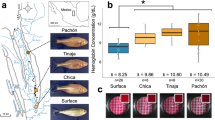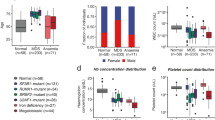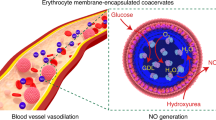Abstract
DURING recent studies of the rock and wood boring molluscs of the super-family Adesmacea (Mollusca : Bivalvia) the occurrence of haemocoelic erythrocytes in the blood of Xylophaga dorsalis Turton was noticed while examining serial sections. The erythrocytes are slightly flattened disks of diameter 10–12µ, each containing a prominent nucleus (Fig. 1).
This is a preview of subscription content, access via your institution
Access options
Subscribe to this journal
Receive 51 print issues and online access
$199.00 per year
only $3.90 per issue
Buy this article
- Purchase on SpringerLink
- Instant access to full article PDF
Prices may be subject to local taxes which are calculated during checkout
Similar content being viewed by others
References
Pearse, A. G. E., Histochemistry, Theoretical and Applied, second ed. (J. and A. Churchill, Ltd., London, 1960).
Prosser, C. L., and Brown, jun., F. A., Comparative Animal Physiology (Saunders, Philadelphia, Pennsylvania, 1961).
Manwell, C., Comp. Biochem. Physiol., 8, 209 (1963).
Read, K. R. H., in Physiology of Mollusca (edit. by Wilbur, K. M., and Yonge, C. M.), 2 (Academic Press, New York, 1966).
Tebble, N., British Bivalve Seashells (British Museum [Natural History], London, 1966).
Author information
Authors and Affiliations
Rights and permissions
About this article
Cite this article
ANSELL, A., NAIR, N. Occurrence of Haemocoelic Erythrocytes containing Haemoglobin in a Wood Boring Mollusc. Nature 217, 357 (1968). https://doi.org/10.1038/217357a0
Received:
Issue date:
DOI: https://doi.org/10.1038/217357a0



